Hills and Dales Estate
 Sunday, June 22, 2014 at 7:00PM
Sunday, June 22, 2014 at 7:00PM Hills and Dales Estate in LaGrange, Georgia is a unique property whose history goes all the way back to 1832, when Nancy Ferrell planted a small formal garden. Her daughter Sarah began her own garden in 1841. From then until her death in 1903, she developed "Ferrell Gardens." It became one of the most famous gardens in the nation. Her husband, Judge Blount Ferrell, died in 1908, and three years later Fuller Calloway Sr. and his wife Ida Cason bought the estate. They built a magnificent Italian style villa on the site of the old Fuller home in 1916; and as they worked to restore the gardens, they diligently preserved Sarah Fuller's original garden plans. 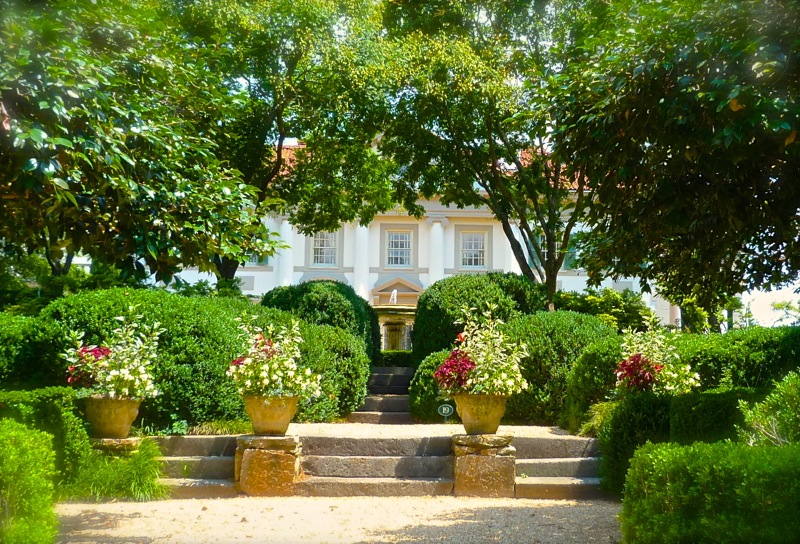 The leaflet I received describes Hills and Dales Estate as a "Southern treasure with 35 acres of rolling hills and shady dales." It is a good description!Today the estate remains in the Calloway family, though no one has lived in the house since 1998. The estate is now a house and garden museum, open to the public.
The leaflet I received describes Hills and Dales Estate as a "Southern treasure with 35 acres of rolling hills and shady dales." It is a good description!Today the estate remains in the Calloway family, though no one has lived in the house since 1998. The estate is now a house and garden museum, open to the public.
I recently visited with other garden lovers from the Birmingham area. No photos are allowed inside the home, but I can say the home is a wonderful complement to the fabulous gardens. One thing that truly impressed me, in a house full of impressive features, was the airy servant's room on the third floor, beautifully decorated and complete with a bathroom with all the finest features of the other bathrooms in the home. The room also featured a round window with the most magnificent view in the home, looking out over the loveliest part of the gardens. Lucky servant!
I will begin a very abbreviated photo tour of the gardens with a look at the exterior of the original garage, where southern magnolias are espaliered. The beautiful tree trunk in the foreground belongs to a crepe myrtle.
Not far from the garage is where, in 1950, Alice Calloway converted part of a large vegetable garden into the Ray Garden: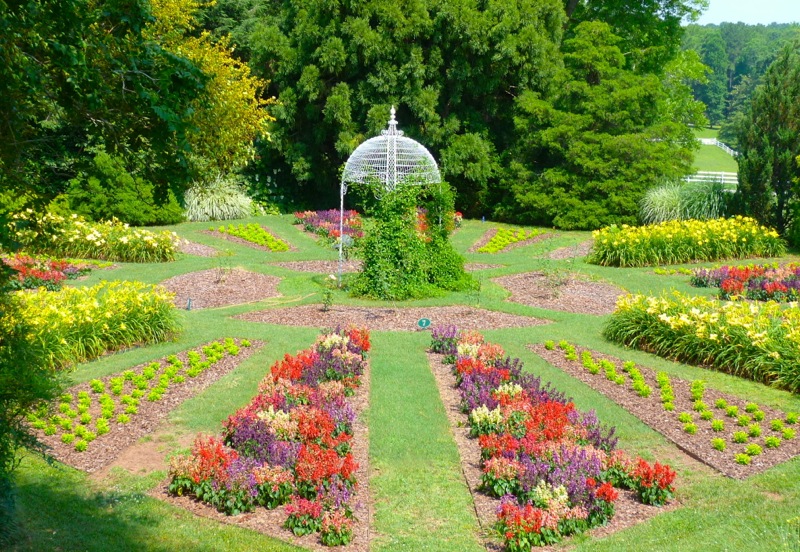
Next are three scenes within the herb garden: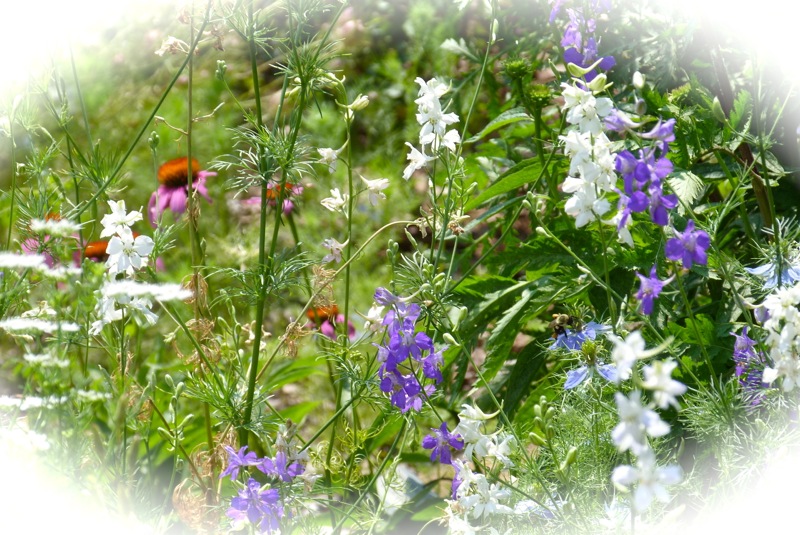
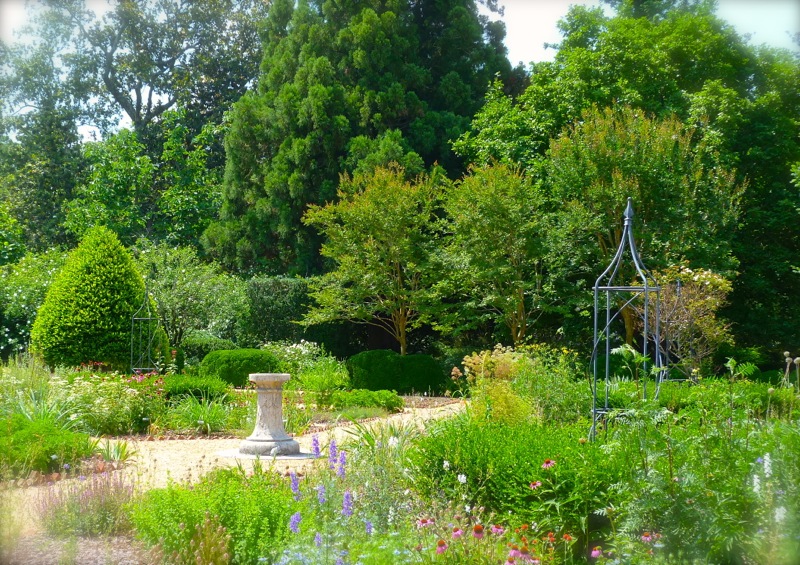
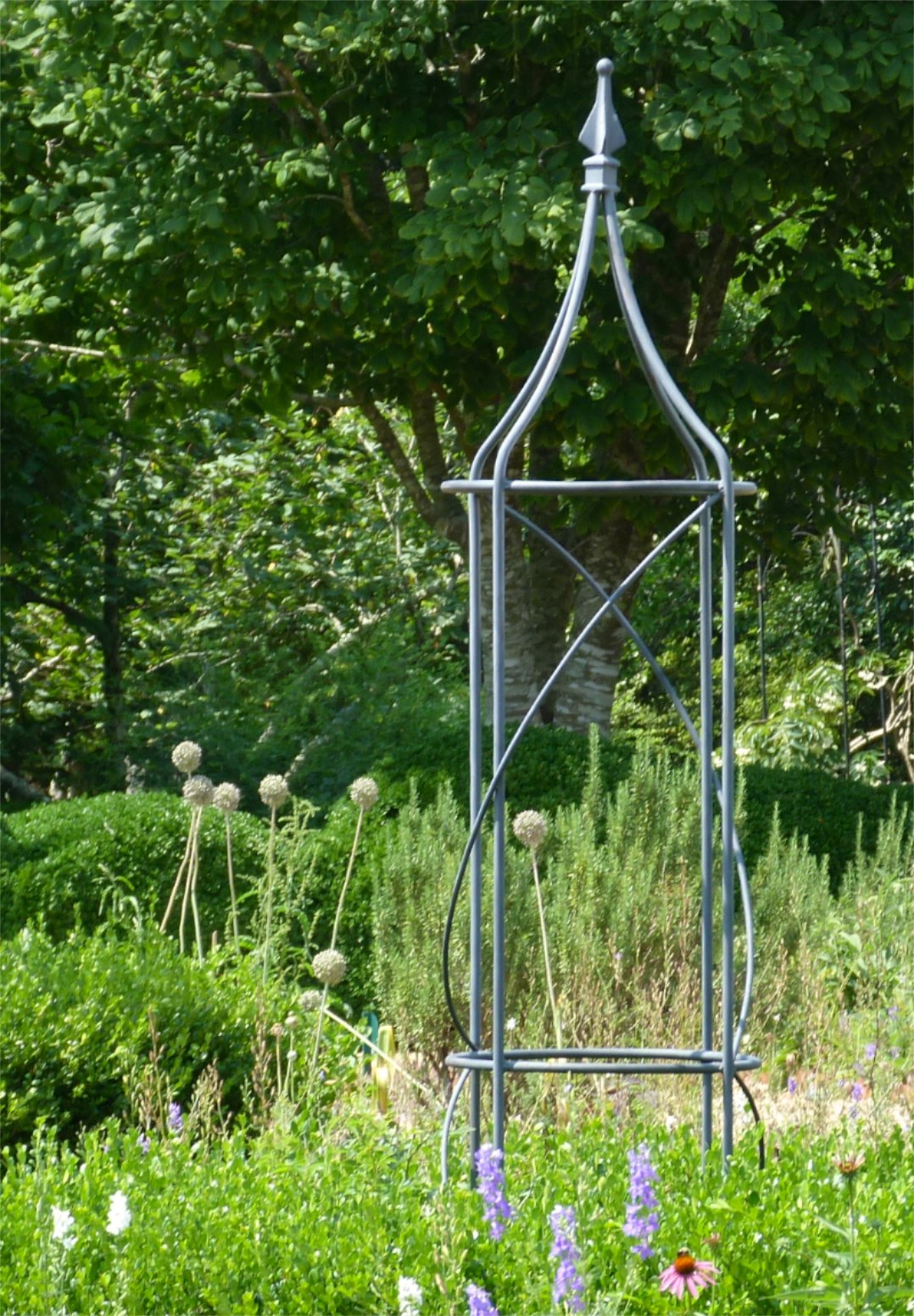
Next to the herb garden is the greenhouse, where orchids, begonias, blooming tropicals, ferns, and succulents grow.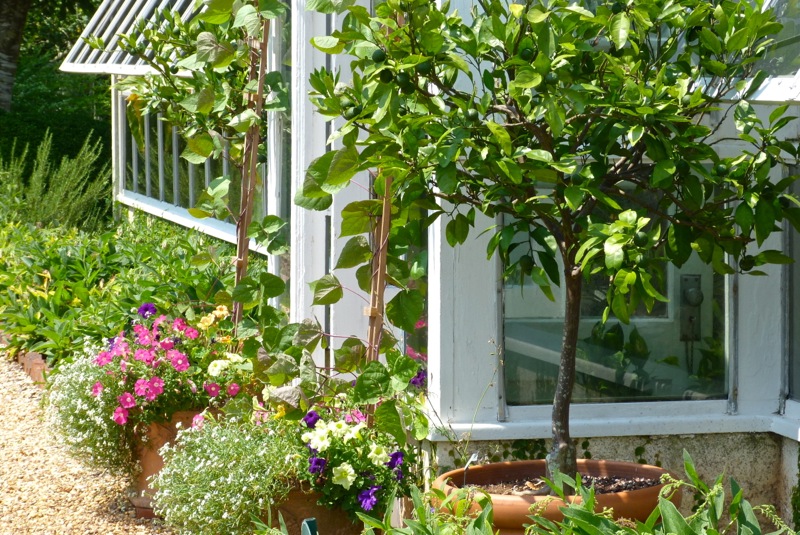
The tour guide shooed us out of the greenhouse long before I was finished looking at all the features inside. There was too much to see! Scenes inside the greenhouse: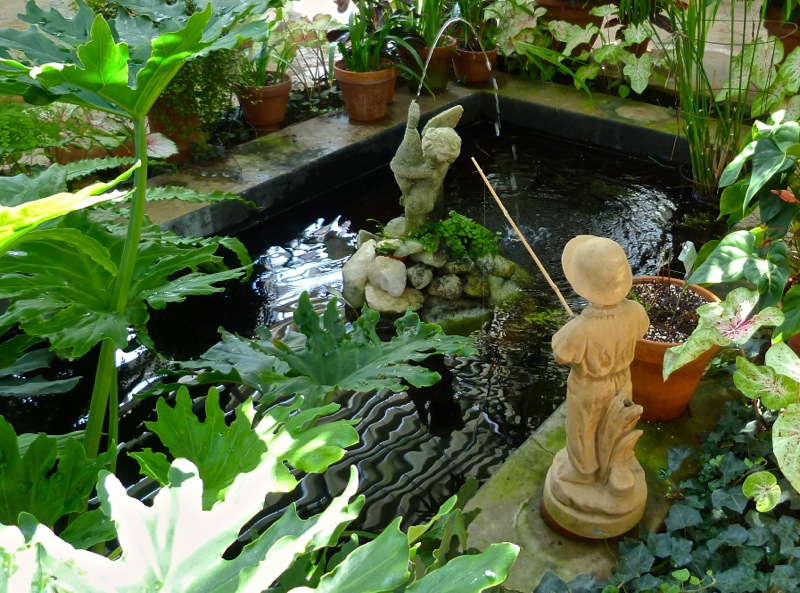
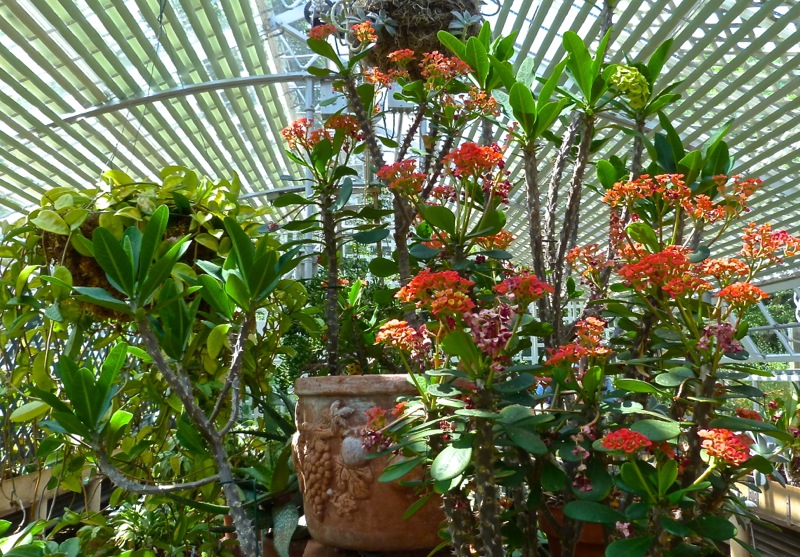
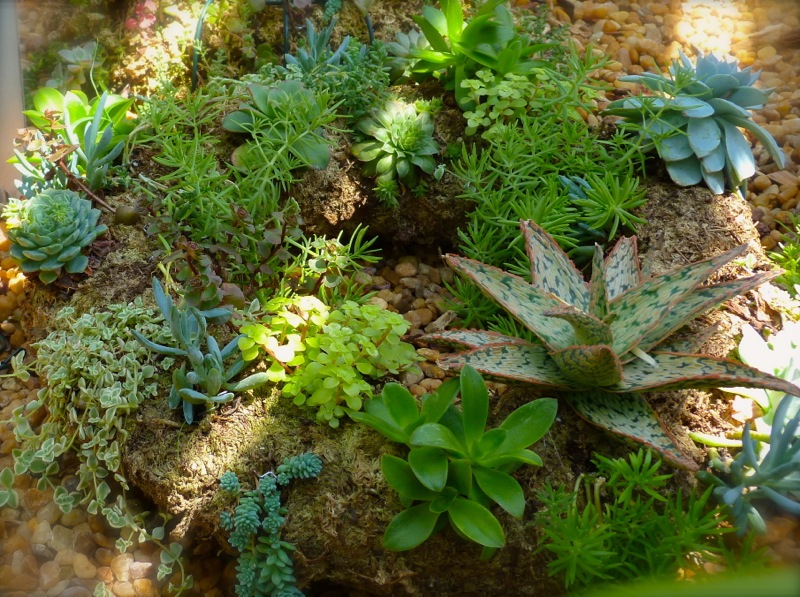 I like this wreath made with succulents.
I like this wreath made with succulents.
Near the herb garden is this ancient China fir, part of the original planting by Sarah Ferrell: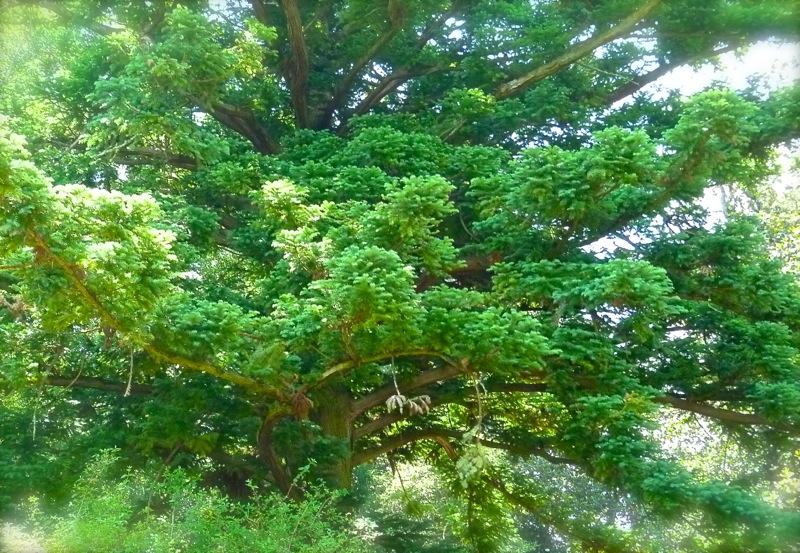
Sarah Ferrell also planted this venerable Ginkgo: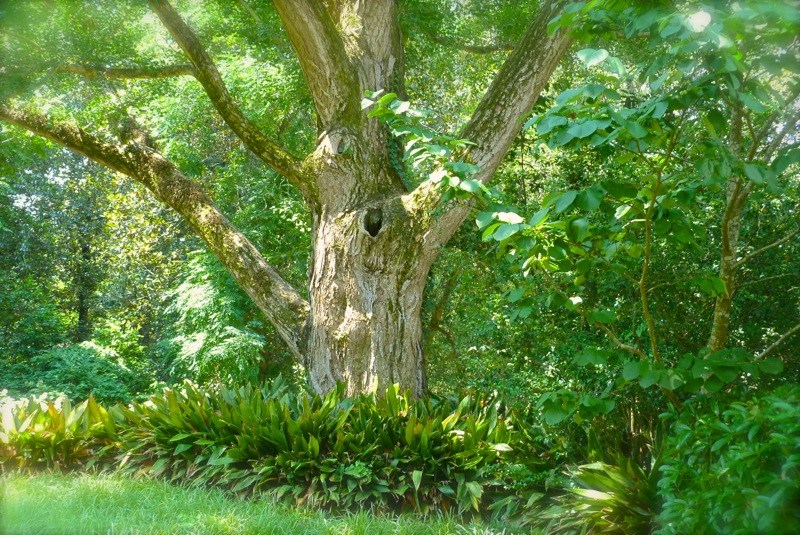
Sarah Ferrell was a devout Christian. Inspired by the the Genesis verse, "In the beginning, God created the heavens and the earth," she planted the word GOD into boxwood at the original entrance to her garden. This may have saved the house during the Civil War when Sherman's troops came through the area, burning and pillaging. Legend reports that the officer in charge of the troops that approached Sarah's home was a religious man, and he spared the property when he saw GOD. My only criticism is that, while GOD remains, there is no elevated view from which visitors can take a photo!
Here are more views of the garden, including Sarah's famous boxwood parterres. You may identify GOD in the smaller shot on the upper left, taken from a side angle:

I have visited several great gardens this month, soaking up inspiration. Deep summer is here now, and with the sticky heat, there are few changes being made in my own garden; but I am just waiting for fall!



